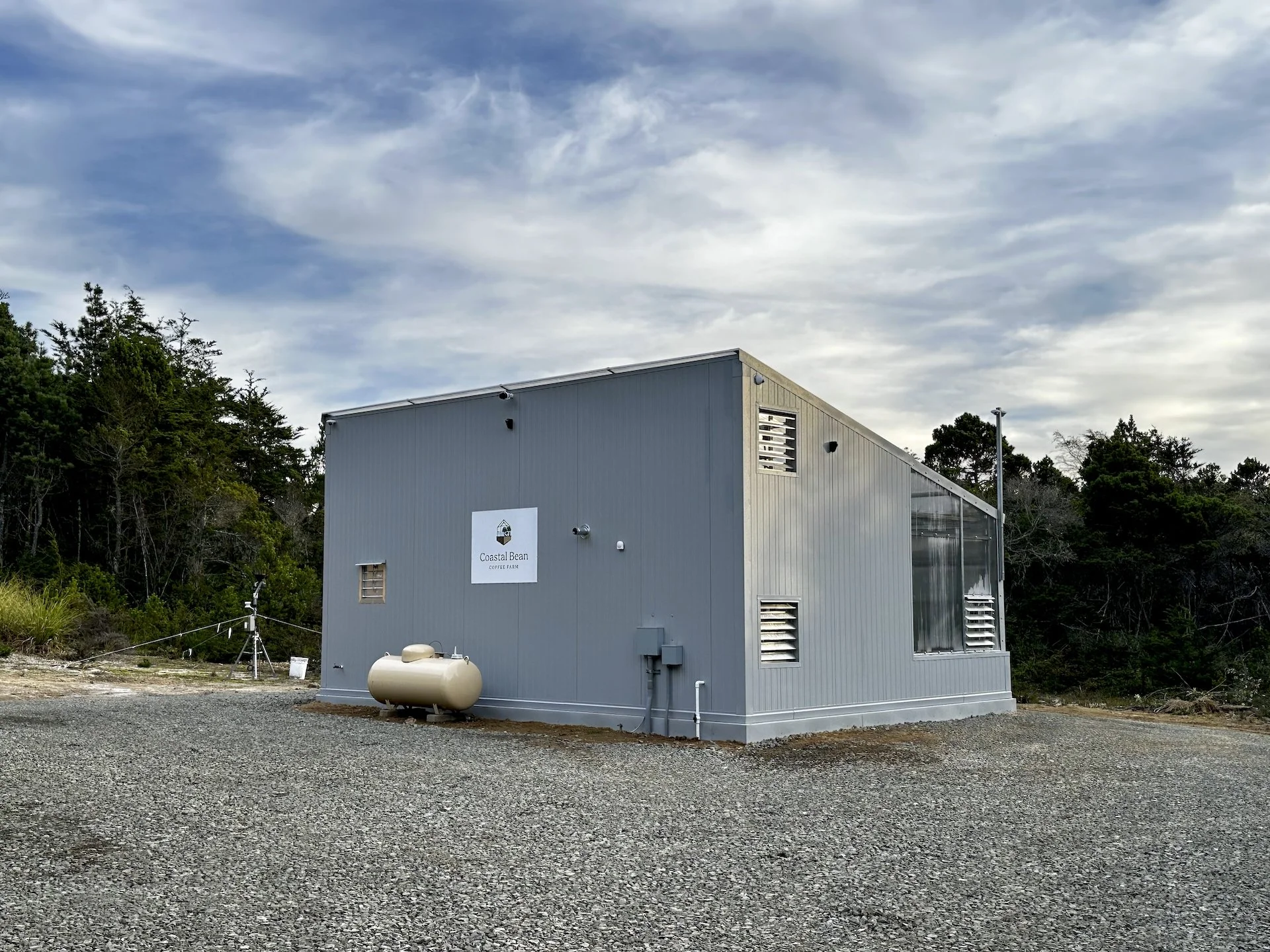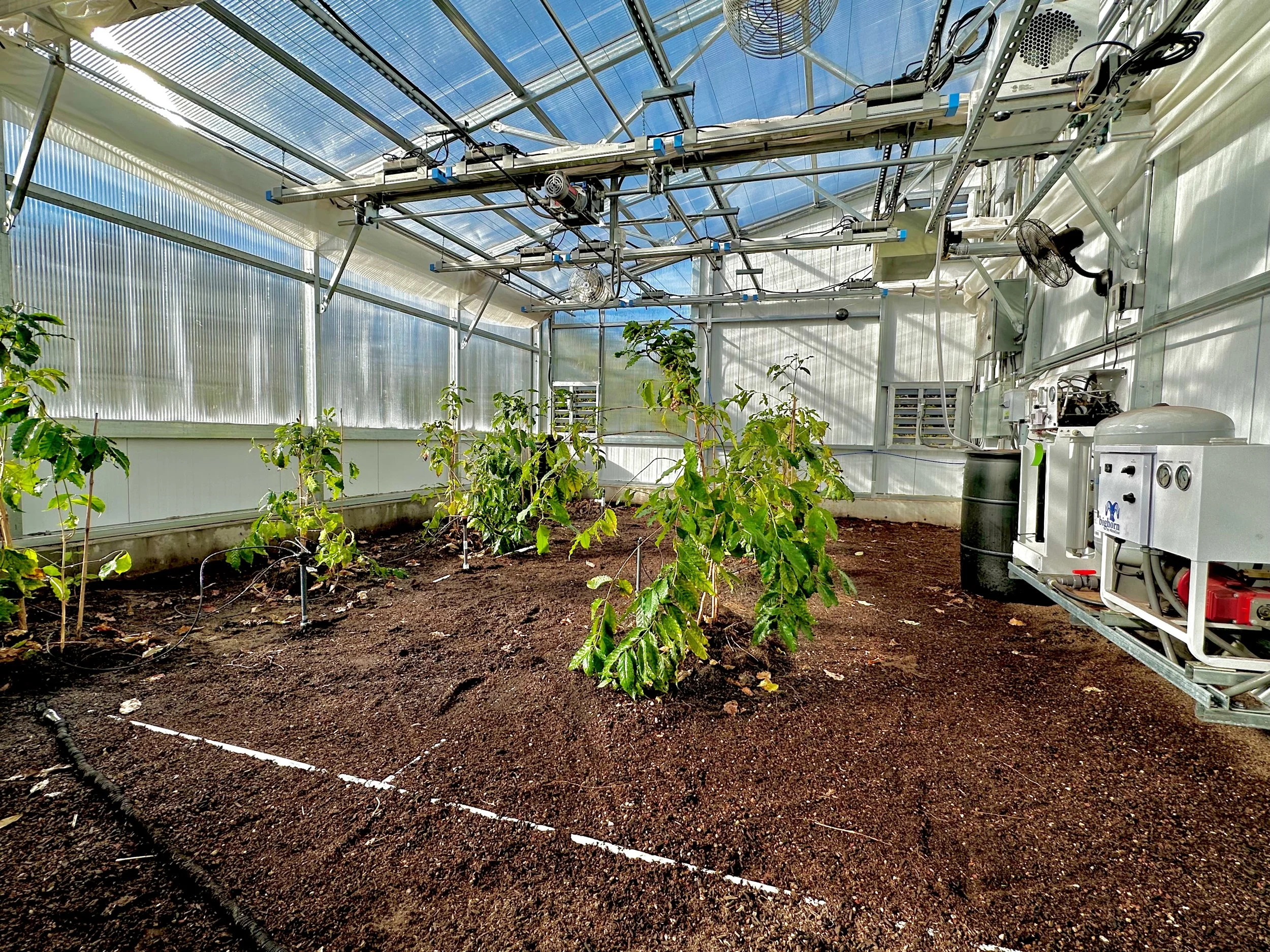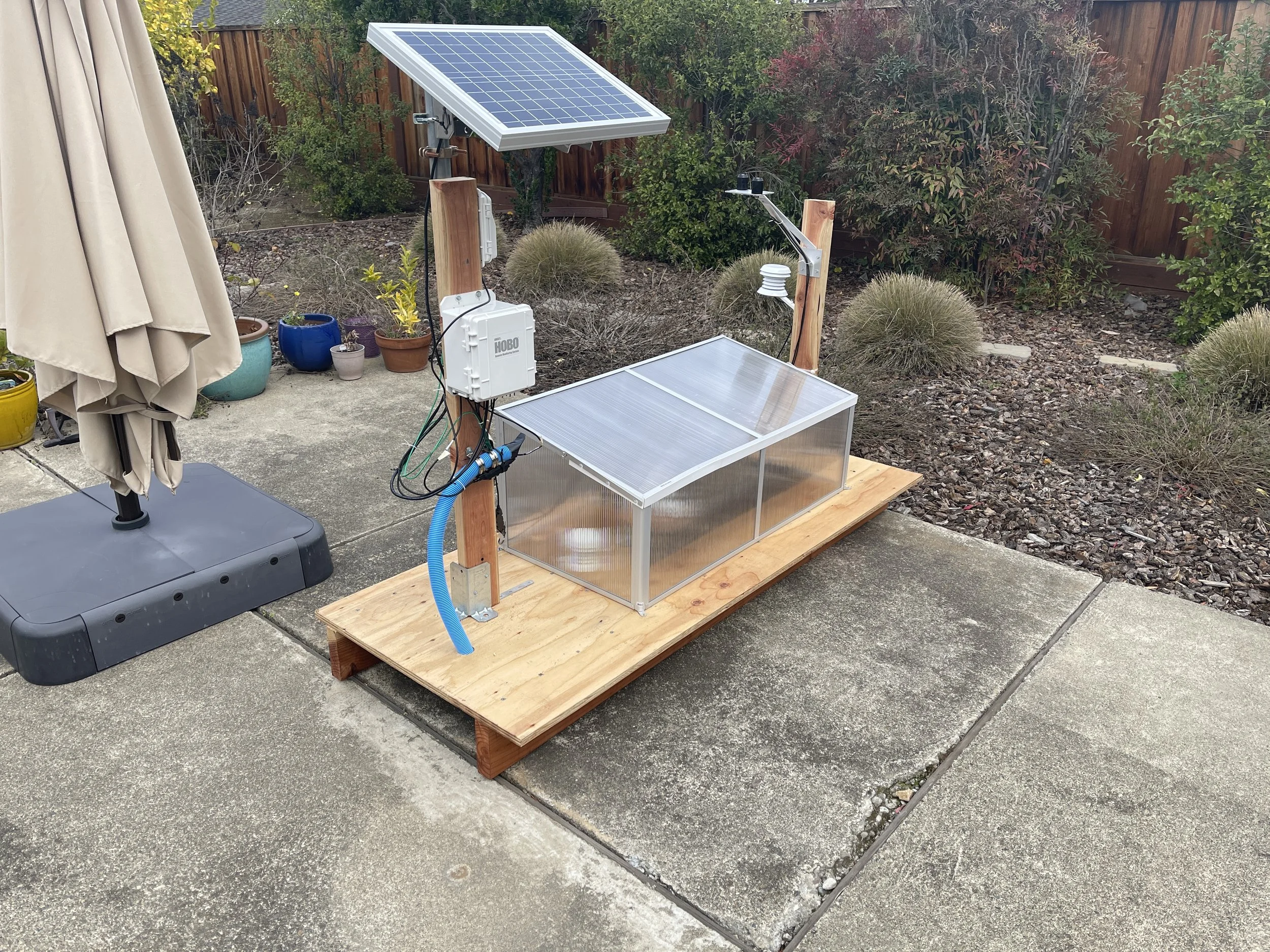The Heart of Coastal Bean Coffee Farm: Our Greenhouse Project
This is the current greenhouse at Coastal Bean Coffee farm. It was developed by Ceres Greenhouse Solutions.
Introduction
At the center of Coastal Bean Coffee Farm stands the greenhouse — both a dream and an experiment. Growing coffee in Northern California isn’t conventional, and that’s exactly what makes it exciting. The greenhouse gives us a controlled environment where we can test, learn, and adapt. It’s not just about producing beans, it’s about the process: the materials, the methods, the technology, and the inevitable lessons that come when things don’t go as planned.
The Greenhouse Today
The current greenhouse is modest in size, but ambitious in purpose. It’s designed to balance plant health with sustainability, using engineering principles to manage climate, airflow, and light. Every detail — from the way we prune plants to how sensors log daily conditions — is part of an ongoing experiment.
It’s not a finished product, but a living system. As I see it, the greenhouse isn’t just where coffee grows; it’s where ideas get tested, improved, and sometimes scrapped. Each change teaches us something new about what coffee needs to thrive far from its natural home.
These are the trees when initially planted in the greenhouse. This is from January 2024.
How We Got Here
This project didn’t start with a perfect design. It began with questions, sketches, and trial runs. My early prototypes were small, rough, and imperfect, but they were crucial for learning how to manage temperature swings, light exposure, and insulation.
Those first tests used solar panels, venting systems, and basic climate sensors. They didn’t always work the way I expected — sometimes the data revealed flaws in design, and other times the results were just plain surprising. But each iteration helped refine the next step.
Looking back, I see the prototypes as the “training wheels” of the project. They allowed me to explore without the risk of losing a whole crop, and they built the foundation for the greenhouse we have today.
Prototype greenhouse, version 1, used to collect initial environmental conditions inside a greenhouse. This is from February 2021.
What’s Growing Now
Inside the greenhouse, rows of coffee plants are steadily developing. Each one is being trained and pruned into a manageable size — around six feet tall and three to four feet wide. This shape isn’t random; it balances productivity with the reality of working in a confined space.
The plants themselves are teachers. They respond to changes in pruning, watering, and light, and sometimes they surprise me with resilience — or with sensitivity I didn’t anticipate. Every season brings a new set of observations, and not all of them point to success. But that’s part of the learning: failure is often just another form of data.




Looking Ahead
The greenhouse is only one piece of the journey. Future posts will explore how light sensors compare at different levels of the canopy, what pruning methods work best, and how environmental adjustments affect growth. And down the line, we’ll follow these plants as they (hopefully) bear cherries — and eventually make their way into the roaster.
For now, the greenhouse is equal parts workshop and classroom. It’s a place where experiments happen, where I can test ideas that might not work, and where curiosity drives progress more than certainty.
This is the heart of Coastal Bean Coffee Farm: not just growing coffee, but learning from the process every step of the way.
Where this project will hopefully take us!




